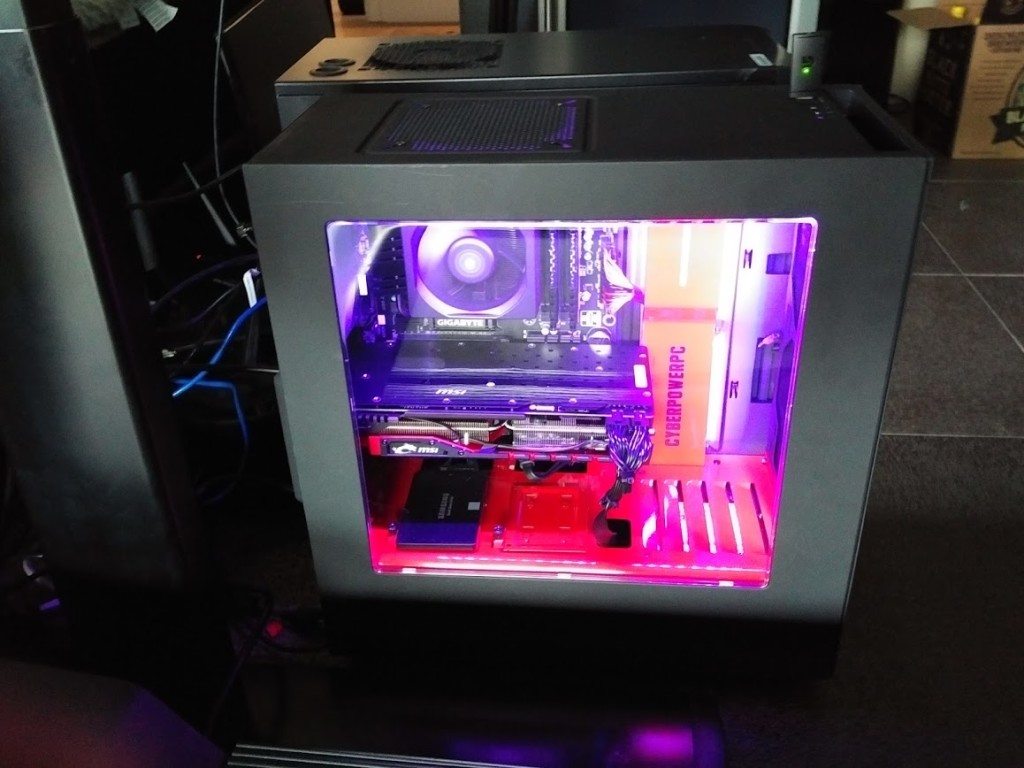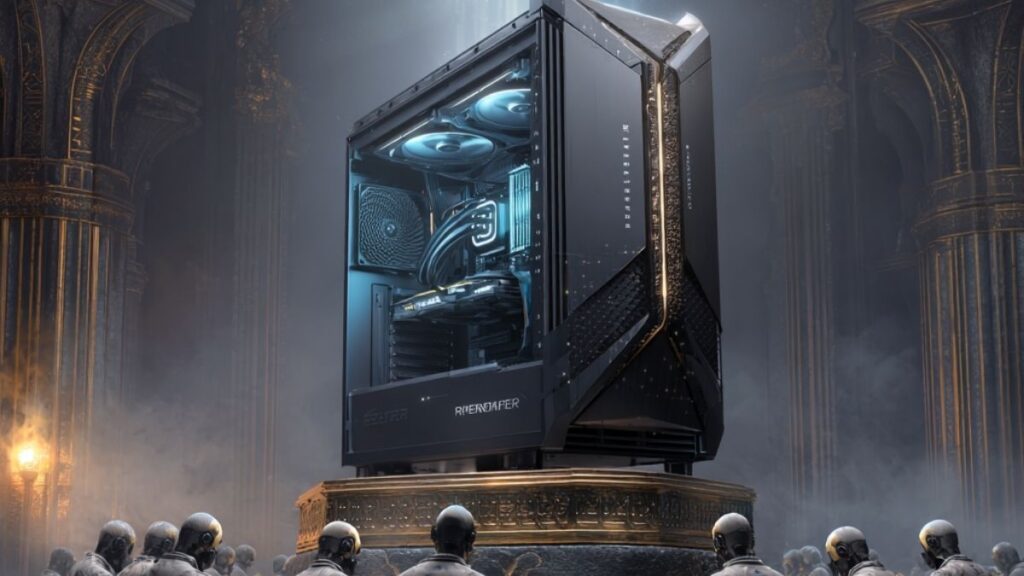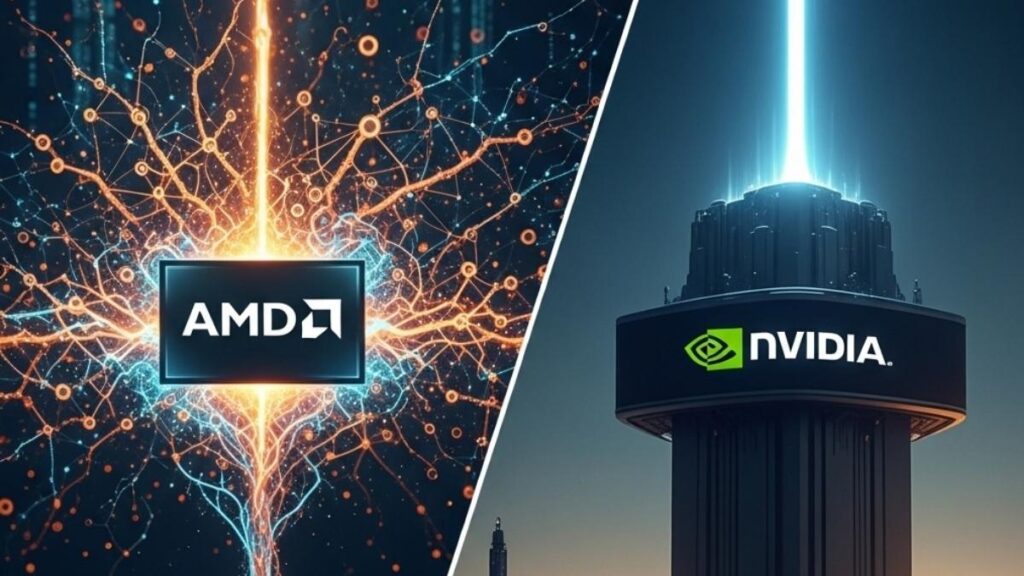There are three problems with chasing the most high-performance systems. 1) They tend to be wicked expensive—easily costing up to $5K. 2) They tend to stop being the fastest reasonably quickly given technology cycles nearly every 6 months. 3) They really don’t give you much of an advantage unless you are pro.
While safer than buying a real race car for occasional track days—which could get you killed—for anyone but the very best, the top end performance box is a waste of money for questionable bragging rights.
Realizing that chasing Intel for absolute performance was both expensive and pointless, and that most people buy in the mid-range of PC gaming machines AMD has refreshed its line, focusing on performance you can use and afford. It is arguing that affordable useful performance is better than excessive performance you likely won’t use and can’t afford even if you could.
AMD has created a virtual bundle of graphics card, processor, and motherboard costing around $560, which should allow you to build an SSD-based system in a great case for under $1,000 and get the maximum value for your money.
AMD sent me one of these systems (did I mention I love my job) and these are my thoughts:
Buy Lower Cycle Faster
Part of the issue with gaming systems is that they age out very quickly, particularly at the high end. But if you buy farther down the price range you can afford to replace them more quickly and potentially raise your average performance for less money. For the same money you paid for that $4k system on year one and had to keep for 4 years you could have bought four $1,000 lower-performance boxes and likely had a higher average performance across all 4 years—and your networking, USB ports, display ports, and storage components would likely be far more up to date as a result. If—rather than buying a new case—you just update the processor, graphics card, and motherboard you have an even lower lifetime cost even if you were to replace those components twice a year for the full 3 years.
On some years you might only need to update the graphics card or processor saving even more money and be able to afford to swap out the motherboard even more quickly should a new hardware feature show up you just had to have.
The end result is that you get decent performance, you potentially save a lot of money, and you still get much of the value of having a regularly replaced PC. Now, it used to be that swapping PCs was a huge pain but with Windows 10, once you get the hang of the OS it is drop-dead simple to migrate to a new machine. Even inexperienced people should be able to do it in under 30 minutes once they are on the platform.
Product Set And Special Cooler
The products that make up this $560 value are the Radeon R9 380X graphics card, AMD FX 8370 processor, and AMD 990FX motherboard. On Amazon the XFX R9 380X sells for $229, the AMD FX 8370 sells for $199, and the Gigabyte 990FX motherboard sells for $109.99. That’s $618, add a 500GB SSD like the Samsung 850 EVO for $153.29, fast 16GB DDR3 memory for $84, and the NZXT Phantom gunmetal gaming case for $99.99 (this case looks particularly stunning in both white with blue trim and red with black trim, but I personally think the gunmetal makes a stronger statement about being serious about gaming) and you get $956.27 total and a pretty decent machine for under $1,000 before sales tax and any shipping.
One of the most interesting parts of this setup is the new Wraith Cooler from AMD which not only keeps the system cooler than most others, but it is designed to be much quieter as well and it comes bundled with the new processor. This cooler, for now, only ships with the FX line but it is slated to move down market to other processor types over time.
Wrapping Up:
As always with a new system, I’m impressed with how much faster it is than the old one. We often forget how much crap builds up on systems over the years that slows them down and moving to a new system gets rid of the crap. Even if you don’t buy a new system every year or two it is increasingly a good idea just to put in a new SSD drive and reload the OS just to eliminate all of the crap slowing down your existing system. You’ll notice from the picture I have a Cyberpower configuration—but that was selected for me. What I’ve highlighted is how I’d build this were I doing it myself.
One thing I didn’t mention is that this new hardware is designed to work with AMD’s FreeSync technology which does wonderful things for games eliminating latency and artifacts. My favorite FreeSync monitor is the LG 34UM67 34” monitor you can get it for $443 on Amazon but it is wonderful and well worth the money. Sometimes you have to go big or go home.
- More Than Moore’s Law: AMD’s 30-Year Masterclass in Corporate Responsibility - September 2, 2025
- Google’s AI-Powered Ambition: A New Pixel Ecosystem Takes Aim at Apple - August 24, 2025
- Intel’s Identity Crisis: In Search of a CEO Who Can Make the Elephant Dance - August 15, 2025




Good build, but what about the power supply? I like the ones from XFX, as they’re made by Seasonic.